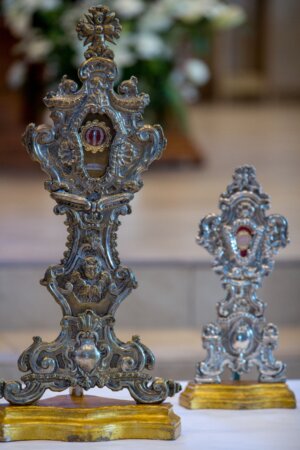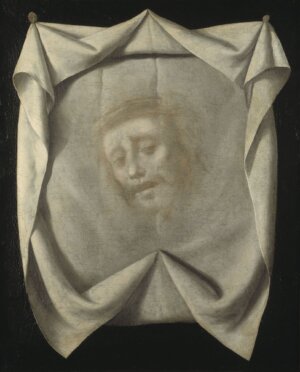Relics of the saints are the most precious heirlooms of the Church. They are not simply historical mementos, but a means through which God has chosen to bestow great graces to those who venerate them.
When discussing relics, we often hear the terms “first-class,” “second-class,” and “third-class.” What do these terms mean?
These “classes” are the categories into which the Church organizes her relics, based on each relic’s proximity to the saint in question.
Let’s investigate the three classes and what kind of items fall into each one.
First-class: This is the “highest” form of relic, and refers to a piece of the body of the saint—including bones, hair, etc. This class also includes relics of Christ’s Passion, such as pieces of the True Cross.
Second-class: These relics are items that belonged to or were used by the saint, such as clothing, books, and rosaries, or an instrument used in the torture or death of a martyr.
Third-class: These are items—such as a rosary, piece of cloth, or prayer card—that have been touched to a first or second class relic.
Learn more about some of the most precious relics of our faith—the relics of the Passion—in Relics from the Crucifixion: Where They Went and How They Got There. You’ll learn about the True Cross and where Its relics can be found, as well as the Crown of Thorns and the very nails that pierced Christ’s sacred Hands. Available today at The Catholic Company!















